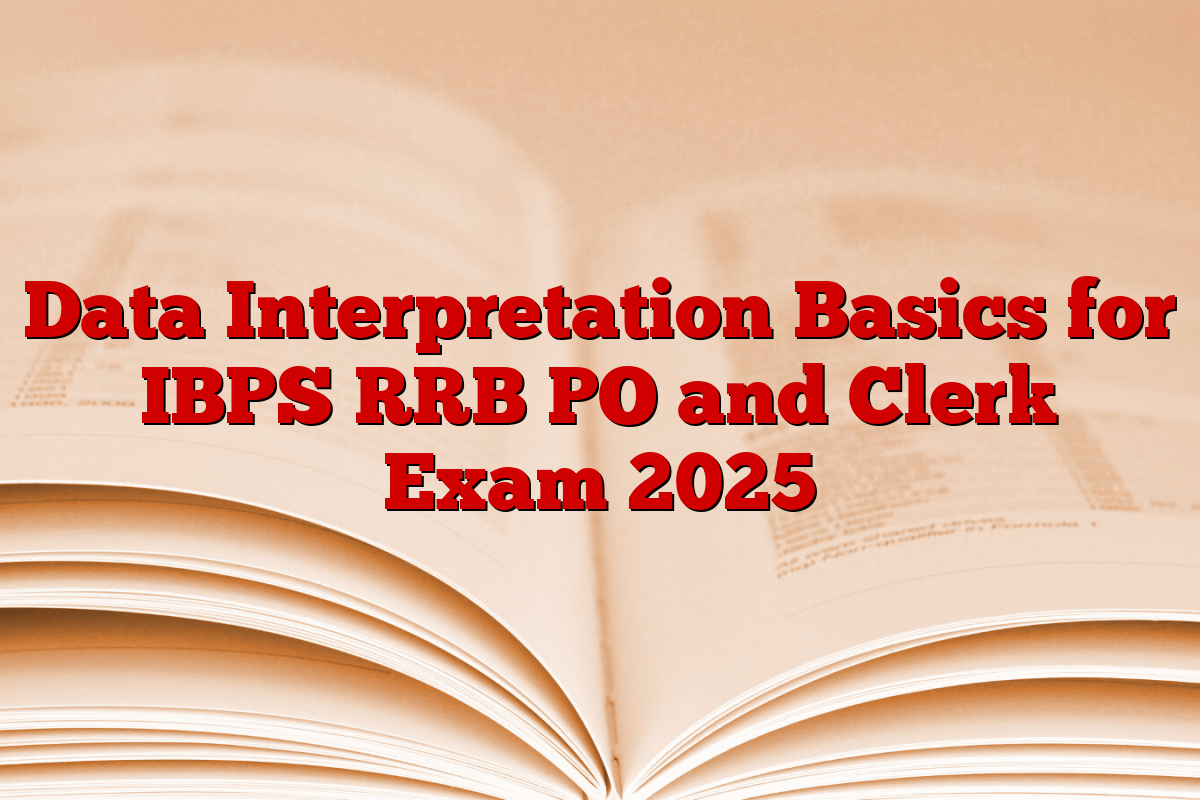Data Interpretation (DI) IBPS RRB PO and Clerk Exam 2025, as well as other banking, insurance and government competitive exams play an important role. This section tests a candidate’s ability to conclude and conclude from data presented in various forms such as table, pie chart, bar graph, and more. To help you create a strong foundation, here are the major basics that you need to master for success in data interpretation.
Data Interpretation Basics for IBPS RRB PO and Clerk Exam 2025
The data interpretation is an important part of the IBPS RRB PO and Clerk Exam 2025, which tests your ability to analyze and interpret numerical data. The basics of charts, tables and graphs are required to solve the questions efficiently and increase your overall score in the quantitative qualification section. Here we share the types of data interpretation, approach to solving DI problems, general DI question type and many other things related to it.
1. Types of data interpretation
- Tables: Data presented in rows and columns. The key numbers of solving DI questions based on tables are careful observation.
- bar graphs: Visual representation of data using bars. Pay attention to the scale and height of bars on the axis.
- pie charts: Circular charts are divided into areas. Each area represents the ratio of total data. It is important to understand the percentage and ratio here.
- Line Credit: Shows data points associated with lines, often used to track changes over time.
- Radar chart: They are often used to compare between multiple variables in different categories.
- Casslets: A set of data presented in paragraph or small cases. Data is usually non-doer, and requires careful reading.
2. Major skills for solving DI
- Basic arithmetic: Apart from this, proficiency, subtraction, multiplication, division and percentage are important.
- Understanding ratio and ratio: It is often used when explaining data.
- reading comprehension: DI questions may include understanding and analyzing the context of data. Be attentive to the information provided.
- critical thinking: DI questions often require you to think logically, explain the data correctly and do the necessary calculations quickly.
3. General DIS question type
- Table data questions: The question will ask you to compare or analyze the data presented in a table, such as finding the highest, lowest or average price.
- Percent-based questions: Often calculating percentage growth, decreasing two categories, or comparing.
- Time and work problems: Questions may involve how the work is distributed among different institutions to calculate the time taken to complete tasks or understand the time taken to complete the tasks.
- Questions of speed, distance and time: These line graphs are common in problems that include changes over time.
4. DI approach to solve problems
- Read data carefully: Make sure you understand what the data represents before answering any question.
- Identify the main information: Pay attention to major numbers or data points that are necessary to solve the question.
- Avoid overcamping: DI questions may look complicated, but they are usually simple if you break them logically.
- Use the estimate when possible: In the examination, time is limited, so an estimated value (when necessary) can save time and effort.
5. Practice and time management
- Start with simple graduation and tables: Initially, focus on solving problems with simple gradation or tables. As you get more confident, go to a more complex dataset.
- Improve speed: Try to solve DI questions under time -bound terms to follow the examination landscapes.
- Practice regularly: The more you practice, the faster you will get you rapidly to explain the data and solve the problems.

